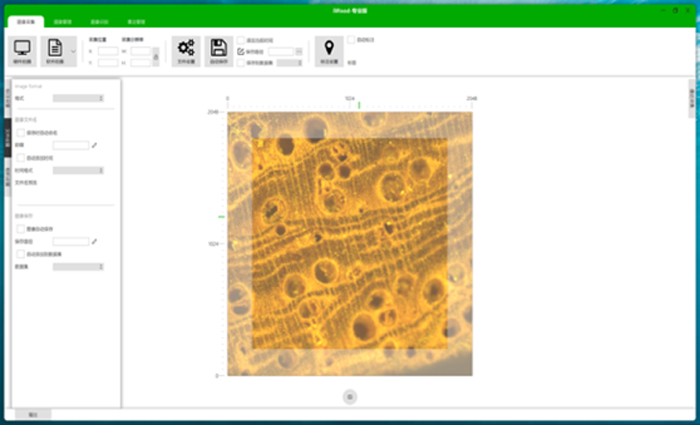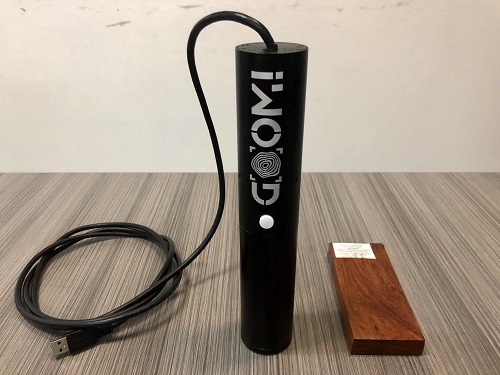
基于计算机技术的竹种分类研究进展
编号
lyqk010061


中文标题
基于计算机技术的竹种分类研究进展


作者单位
国际竹藤中心, 国家林业和草原局/北京市共建竹藤科学与技术重点实验室 北京 100102


期刊名称
世界竹藤通讯


年份
2022


卷号
20


期号
6


栏目名称
综合述评


中文摘要
竹类植物种类繁多,如何科学准确地进行竹种分类对竹子的材性和加工利用研究至关重要。文章总结了计算机技术在竹种分类领域中的应用。分析显示,从最初的人工标记特征至后来的智能提取特征,基于计算机技术的竹种分类不断纳新,方法逐渐脱离人工,向着智能化方向迈进,既节省了大量人力物力,也可避免人为主观判断带来的偏差,将成为今后竹子分类识别的研究热点。


关键词
竹种分类
计算机技术
数量分类学
性状特征
深度学习模型


基金项目
国际竹藤中心基本科研业务费项目“基于形态特征的竹种智能识别技术研究”(1632022007)。


英文标题
Research Advances in Bamboo Species Classification Based on Computer Technology


作者英文名
Wang Ziwei, Dai Fukuan, Yue Xianghua, Wang Hankun, Tian Genlin


单位英文名
International Center for Bamboo and Rattan, Key Laboratory of National Forestry and Grassland Administration/Beijing for Bamboo & Rattan Science and Technology, Beijing 100102, China


英文摘要
There are a large number of bamboo species, and the science-based and accurate classification of bamboo species is very important for the research on bamboo properties and utilization. This paper summarizes the application of computer technology to bamboo species classification. The analysis shows that, from the initial manual marking of features to the later intelligent feature extraction, the bamboo classification based on computer technology continues to introduce new methods, and gradually shifts from manual work towards intelligence. This method not only saves the manpower and material resources, but also avoids the bias caused by human subjective judgment, and it will be the research hotspot of bamboo classification and recognition in the future.


英文关键词
bamboo species classification;computer technology;numerical taxonomy;properties and characteristics;deep learning model


起始页码
91


截止页码
96


作者简介
汪紫微,硕士研究生,研究方向为竹材基础性质,E-mail:treasure0807fire@gmail.com


通讯作者介绍
田根林,副研究员,博士,研究方向为竹藤材结构与性能E-mail:tiangenlin@icbr.ac.cn


E-mail
tiangenlin@icbr.ac.cn


DOI
10.12168/sjzttx.2022.06.016


参考文献
[1] 李智勇, LONG T T, 李楠, 等. 亚洲主要国家竹种资源与利用[J]. 世界竹藤通讯, 2020, 18(4):1-7.
[2] 王正平. 中国竹亚科分类系统之我见[J]. 竹子研究汇刊, 1997, 16(4):1-6.
[3] 赖广辉. 试论竹子分类和种系鉴定中的若干方法问题[J]. 竹子研究汇刊, 2013, 32(3):9-13, 27.
[4] ZHANG Y X, ZENG C X, LI D Z. Scanning electron microscopy of the leaf epidermis in arundinarieae (Poaceae:Bambusoideae):evolutionary implications of selected micromorphological features[J]. Botanical Journal of the Linnean Society, 2014, 176(1):46-65.
[5] BENTHAM G, HOOKER S J D, STEARN W T. Generaplantarum, ad exemplaria imprimis in Herberiis Kewensibus servata definita auctoribus G. Bentham et J.D. Hooker[M]. 1965.
[6] HOLTTUM R E. The classification of bamboos[J].Phytomorphology, 1956, 6(1):73-90.
[7] 耿伯介. 中国主要禾本植物属种检索表:附系统名录[M]. 北京:科学出版社, 1957.
[8] 葛罗逊, 里斯, 耿伯介. 关于亚州竹类的解剖及其维管束[J]. 竹子研究汇刊, 1982, 1(1):105-130.
[9] 李正理, 靳紫宸. 几种国产竹材的比较解剖观察[J]. 植物学报, 1960, 9(1):76-97.
[10] 李正理, 靳紫宸, 腰希申. 国产竹材的比较解剖观察续报[J]. 植物学报, 1962, 10(1):15-28.
[11] FRIAR E, KOCHERT G. Bamboo germplasm screening with nuclear restriction fragment length polymorphisms[J].Theoretical and Applied Genetics, 1991, 82(6):697-703.
[12] LOH J P, KIEW R, SET O, et al. A study of genetic variation and relationships within the bamboo subtribe Bambusinae using amplified fragment length polymorphism[J]. Annals of Botany, 2000, 85(5):607-612.
[13] BARKLEY N A, NEWMAN M L, WANG M L, et al. Assessment of the genetic diversity and phylogenetic relationships of a temperate bamboo collection by using transferred EST-SSR markers[J]. Genome, 2005, 48(4):731-737.
[14] W BER W, MEHNEN L, SYKACEK P, et al. Investigating explanatory factors of machine learning models for plant classification[J]. Plants, 2021, 10(12):2674. DOI:10.3390/plants10122674.
[15] PRIYA C A, BALASARAVANAN T, THANAMANI A S. An efficient leaf recognition algorithm for plant classification using support vector machine[C]. International Conference on Pattern Recognition, Informatics and Medical Engineering. Salem, India:IEEE, 2012:428-432. DOI:10.1109/ICPRIME.2012.6208384.
[16] KAYA A, KECELI A S, CATAL C, et al. Analysis of transfer learning for deep neural network based plant classification models[J]. Computers and Electronics in Agriculture, 2019, 158:20-29. DOI:10.1016/j.compag.2019.01.041.
[17] 张明理. 植物数量分类学的流行方法[J]. 西北植物学报, 1986, 6(1):67-80.
[18] 徐克学. 数量分类学[M]. 北京:科学出版社, 1994.
[19] SOKAL RR, SNEATH P H A. Principles of numerical taxonomy[M]. 1963.
[20] 郑炜. 数量分类学研究进展及其在植物检疫领域的应用[J]. 浙江农业科学, 2013(5):572-573.
[21] BANIK R L. Morphology and Growth[M]//LIESE W, KÖHL M. Tropical forestry:bamboo. Springer, 2015:43-89. DOI:10.1007/978-3-319-14133-6_3.
[22] MCCLURE F A. Genera of bamboos native to the new world (Gramineae:Bambusoideae)[M]. Washington:Smithsonian Institution Press, 1973.
[23] LIESE W. Research on bamboo[J]. Wood Science and Technology, 1987, 21:189-209. DOI:10.1007/BF00351391.
[24] 李德铢. 竹亚科分类的若干方法问题:兼论牡竹属的范畴[J]. 植物分类学报, 1994, 32(3):283-9.
[25] 陈守良, 徐克学, 盛国英. 中国散生竹类的数量分类和确定分类等级的探讨[J]. 植物分类学报, 1983, 21(2):113-119.
[26] 李德铢, 薛纪如. 中国牡竹属的研究(之一)[J]. 竹子研究汇刊, 1988, 7(3):1-19.
[27] 李德铢, 薛纪如. 中国牡竹属的研究(之二)[J]. 竹子研究汇刊, 1988, 7(4):1-19.
[28] 李德铢, 薛纪如. 中国牡竹属的研究(之三)[J]. 竹子研究汇刊, 1989, 8(1):25-43.
[29] 张汉尧, 刘小珍, 孙茂胜, 等. 竹子形态标记聚类分析研究[J]. 竹子研究汇刊, 2005, 24(1):25-28.
[30] 张映堂, 辉朝茂, 朵健. 数量分类在天然竹类植物群落划分中的应用[J]. 西南林学院学报, 1988, 8(1):48-55.
[31] 辉朝茂. 云南竹亚科植物名录初报[J]. 云南林业科技, 1989(4):34-43.
[32] 张汉尧, 刘小珍, 孙茂胜, 等. 云南部分竹种形态标记数量分类研究[J]. 福建林业科技, 2005(2):31-33.
[33] 薛纪如, 杨宇明, 辉朝茂. 云南竹类资源及其开发利用[M]. 昆明:云南科技出版社, 1995.
[34] 陈家宽, 王徽勤. 居群概念和方法在植物分类学中的应用[J]. 武汉植物学研究, 1986, 4(4):377-383.
[35] 陈龙清, 陈俊愉, 包满珠. 论居群观念与花卉分类的关系[J]. 北京林业大学学报, 1998, 20(2):76-82.
[36] 吴豪, 龙春玲, 于芬, 等. 井冈寒竹属叶表皮微形态特征及其分类学意义[J]. 植物科学学报, 2014, 32(3):211-215.
[37] 龙春玲. 井冈寒竹复合体(竹亚科)的分类学研究[D]. 南昌:江西农业大学, 2015.
[38] 龙春玲, 孔亭, 李玮剑, 等. 井冈寒竹复合体(竹亚科)的表型变异及其分类学意义[J]. 植物分类与资源学报, 2015, 37(6):704-712.
[39] 温太辉, 周文伟. 中国竹类维管束解剖形态的研究初报(之二)[J]. 竹子研究汇刊, 1985, 4(1):28-43.
[40] 温太辉, 周文伟. 中国竹类维管束解剖形态的研究初报(之一)[J]. 竹子研究汇刊, 1984, 3(1):1-21.
[41] LIESE W. The anatomy of bamboo culms[M]. Brill, 1998.
[42] 甘小洪, 丁雨龙. 竹类结构植物学研究进展[J]. 竹子研究汇刊, 2002, 21(1):11-17.
[43] 竹内叔雄. 竹的研究[M]. 北京:建筑工程出版社, 1957.
[44] 高智慧. 利用秆维管束进行中国散生竹类的聚类分析[J]. 广西植物, 1991(2):135-140.
[45] 刘涵, 贺霖, 李军. 深度学习进展及其在图像处理领域的应用[J]. 中兴通讯技术, 2017, 23(4):36-40.
[46] 李欣, 许高建, 李绍稳. 一种优化的SVM竹类属种识别方法[J]. 重庆科技学院学报(自然科学版), 2017, 19(5):98-101.
[47] 李欣. 竹类种质资源数据抽取与分类方法研究[D]. 合肥:安徽农业大学, 2017.
[48] 周必铙, 卞丽丽, 徐薪璐, 等. 应用竹类叶片性状特征和支持向量机算法的竹种识别[J]. 东北林业大学学报, 2022, 50(5):63-69.
[49] 沈逸. 基于竹叶图像复合特征的竹亚科植物分类识别方法研究[D]. 成都:四川农业大学, 2020.
[50] SINGH K, GUPTA I, GUPTA S, et al. Classification of bamboo plant based on digital image processing by central moment[C]//Proceedings of the 2011 International Conference on Image Information Processing, 2011.
[51] KRISHNA SINGH S S. Comparisons of three classifier for classification of bamboo plant[C]//Proceedings of the International Conference on Information Systems Design and Intelligent Applications. Visakhapatnam, India, 2012.
[52] SARMA P, TALUKDAR J K. Digital image processing based proposed approach to identify different bamboo species[C]. 2020 Second International Conference on Inventive Research in Computing Applications, 2020:32-37.
[53] TONG L, LI B, GENG Y, et al. Spectrometric classification of bamboo shoot species by comparison of different machine learning methods[J]. Food Analytical Methods, 2021, 14(2):300-306.
[54] 岳想想, 李绍稳. 基于PCA-IAGNES的竹材分类模型研究[J]. 洛阳理工学院学报(自然科学版), 2018, 28(2):67-70.
[55] LECUN Y, BENGIO Y, HINTON G. Deep learning[J]. Nature, 2015, 521(7553):436-444.
[56] COURVILLE I G Y B A. Deep learning[M]. England:Massachusetts Institute of Technology, 2015.
[57] GUO Y L Y, OERLEMANS A, et al. Deep learning for visual understanding:a review[J]. Neurocomputing, 2016, 187:27-48.
[58] 金玮, 孟晓曼, 武益超. 深度学习在图像分类中的应用综述[J]. 现代信息科技, 2022, 6(16):29-31.
[59] 段慧茹. 基于卷积神经网络的竹种图像分类方法研究[D]. 合肥:安徽农业大学, 2020.
[60] 王志玲, 李绍稳, 金秀. 深度学习模型压缩方法在竹种分类中的应用研究[J]. 复旦学报(自然科学版), 2020, 59(6):740-747.
[61] 王志玲. 竹种图像深度学习分类模型压缩方法研究[D]. 合肥:安徽农业大学, 2020.
[62] JUYAL P, KULSHRESTHA C, SHARMA S, et al. Common bamboo species identification using machine learning and deep learning algorithms[J]. International Journal of Information Technology and Electrical Engineering, 2020, 9(4):3012-3017. DOI:10.35940/ijitee.D1609.029420.


PDF全文
浏览全文


-
相关记录
更多
- 基于计算机的木材特征提取和分类识别技术研究综述 2020
- 重组装饰材纹理的计算机模拟设计研究 2018
- 计算机技术在国外林业中应用的现状及发展趋向 1998
 打印
打印

